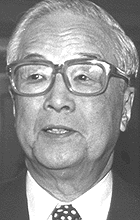Introduction
Columbia’s tradition in engineering and applied science education traces back to the chartering of King’s College in 1754. Steamboat inventor John Stevens graduated from the college a few years before the Revolutionary War, and DeWitt Clinton, the statesman responsible for the Erie Canal, earned his Columbia degree in 1786. Columbia’s legacy of engineering instruction continued in the nineteenth century and was formalized in 1864 with the founding of the engineering school, the third oldest in the country.
As the Engineering School has diversified and grown, it has built an enduring reputation as a center of research excellence in select fields and as Alma Mater to generations of alumni who have shaped academic departments and industrial research programs across the country. In 1997, Z.Y. Fu and The Fu Foundation announced a gift of $26 million, designed broadly for “support of engineering excellence at Columbia,” and more specifically for support of faculty and the enhancement of interdisciplinary research in areas of emerging strength.
Retrospectively, I appreciate Columbia far more than I thought possible; conversations with friends, both recent graduates and not-so-recent graduates, seem to indicate that this is the norm. It is rare that one appreciates the intangible lessons and experiences of life—especially as an undergraduate—while they are being taught; rather one looks back to treasure the good times and internalize the experiences. SEAS exposed me to a rigorous technical engineering program, as well as an insightful liberal arts curriculum, but it also taught me to be resourceful and to be prepared to walk through any doors leading to opportunity.
An immediate measure of the benefits of the naming gift from The FU Foundation has been the addition of more than forty-five new faculty members, representing a fifty percent increase within the past decade. While the faculty has grown, class size has not increased, so an already impressive student-to-faculty ratio has gotten even better, and now stands at 10:1.
Many doors were opened for me as a result of attending Columbia. I not only earned a B.S. in biomedical engineering, I alsoreceived an education from an institution that demands its graduates enter the world with knowledge beyond the confines of their discipline. When talking with friends about Columbia, it was unanimous—being part of Columbia is a huge milestone in each of our lives.
Entertainment and relaxation are definitely important aspects of a Columbia education, but taking a break from lectures, laboratories, and studying does not necessarily mean defaulting to the neighborhood bar or campus party. The Columbia experience truly encompasses the principle of diversity in every sense of the word.

